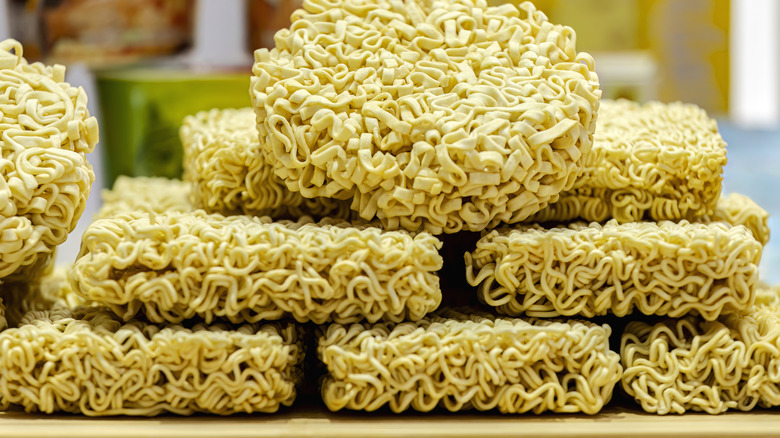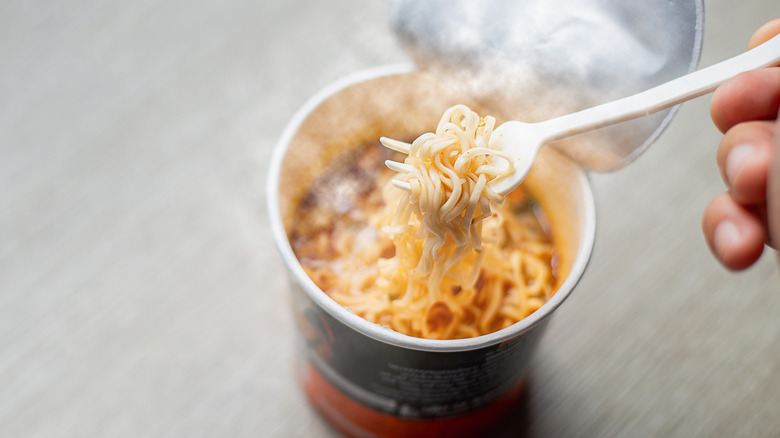The Science Behind What Makes Instant Noodles Instant
There a hundreds of different ways to eat noodles throughout the world, but instant noodles are a global pantry staple. Their single serving size and quick preparation make it easier to cook than a pot of pasta — but what exactly makes these noodles "instant?" The secret lies in the manufacturing process, carefully designed to reduce cooking time while maintaining the texture. Like other instant foods and those labeled as par-cooked, instant noodles have already been cooked before you take them out of the package and submerge in boiling water.
Instant noodles are made primarily from a base of wheat flour and water, like most pasta. Making instant noodles also follow a similar process to making any other type of noodles; the ingredients are mixed together to form a dough, which is then rolled out and extruded to form the familiar long strands.
Next comes the key step to making the noodles instant: pre-cooking. The raw noodles are typically first cooked by steaming. Then, they undergo the process of frying or air-drying to remove the moisture content that has been increased from steaming. Frying the noodles in oil greatly reduces their moisture content, leaving them brittle and dry. Air-dried noodles skip the oil, and are exposed to industrial blow dryers for about an hour at a low temperature to remove the moisture without cooking further. During the drying process, the shape of the noodles is manipulated to create the familiar wavy squares or discs we find in ramen packs or cups.
How noodles and other instant foods rehydrate quickly
To be clear, when you add boiling water to a package of instant noodles, you're not actually cooking them — you're technically rehydrating them. The ability to have hot, soft noodles in one to two minutes, as opposed to eight to 10 minutes, is because the noodles have already been cooked at the production factory. Whether the noodles are boiled or steamed, they undergo an important chemical reaction during this step.
The important chemical reaction that allows for the creation of instant noodles and other instant foods is called gelatinization. This occurs during the cooking process, where starches in foods absorb water and swell up during cooking, which breaks down their structure. Gelatinization isn't unique to noodles, it also occurs during the cooking process of other high-starch foods like rice, potato, and other grains. Thanks to this chemical reaction, foods become easier to chew and digest.
In the case of instant noodles, the starches have already been gelatinized, so when hot water is poured on top of the noodles, it quickly returns to the soft noodle we know and love. Other instant foods like potato, oatmeal, soup, and gravy also rely on this chemical process. If you love the instantaneity of the noodles, but don't love the flavor and quality, try upgrading it with a creamy component. Here are some other secret ingredients you should be using in your ramen.

